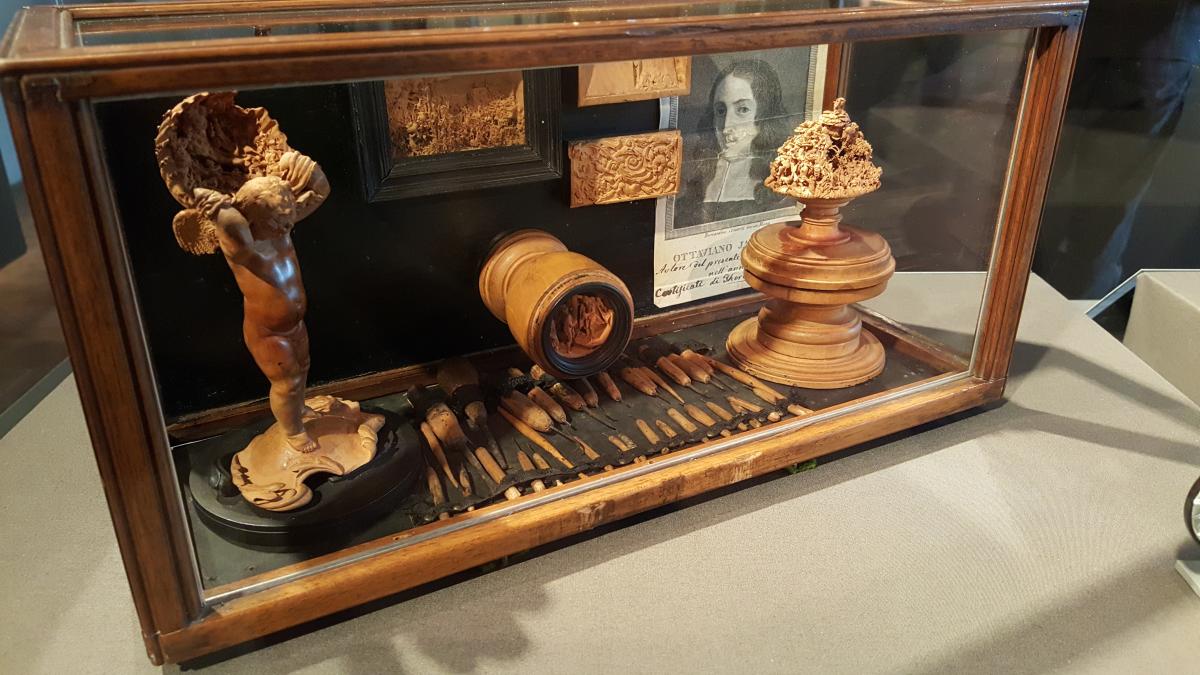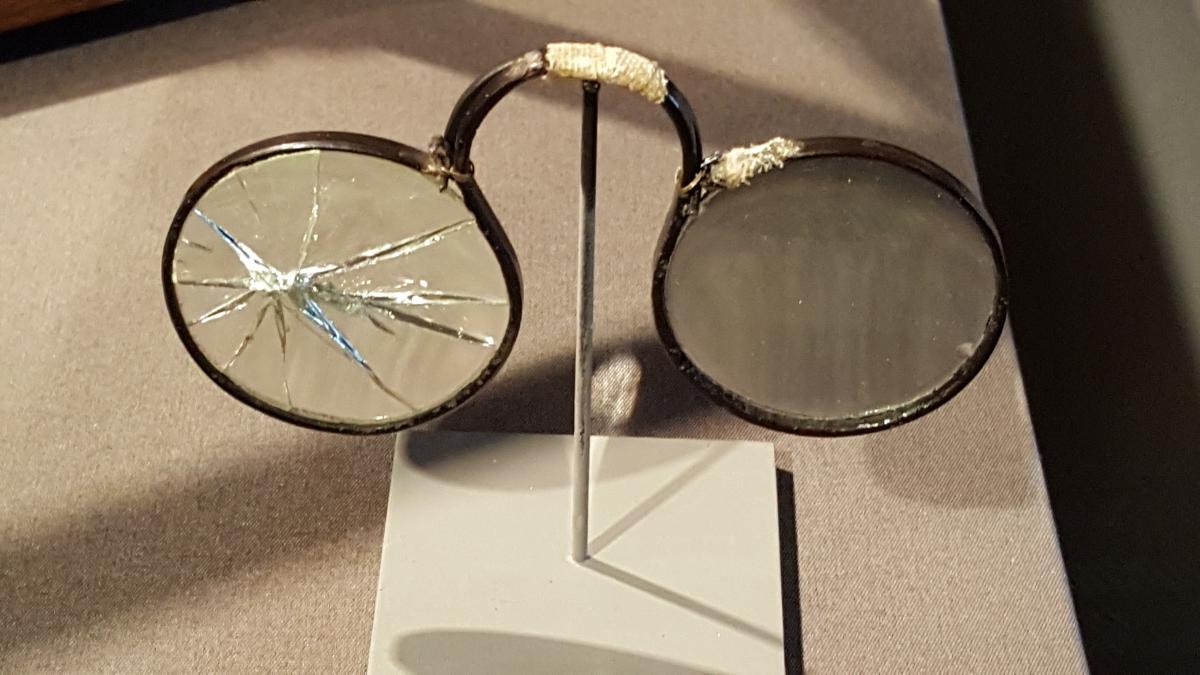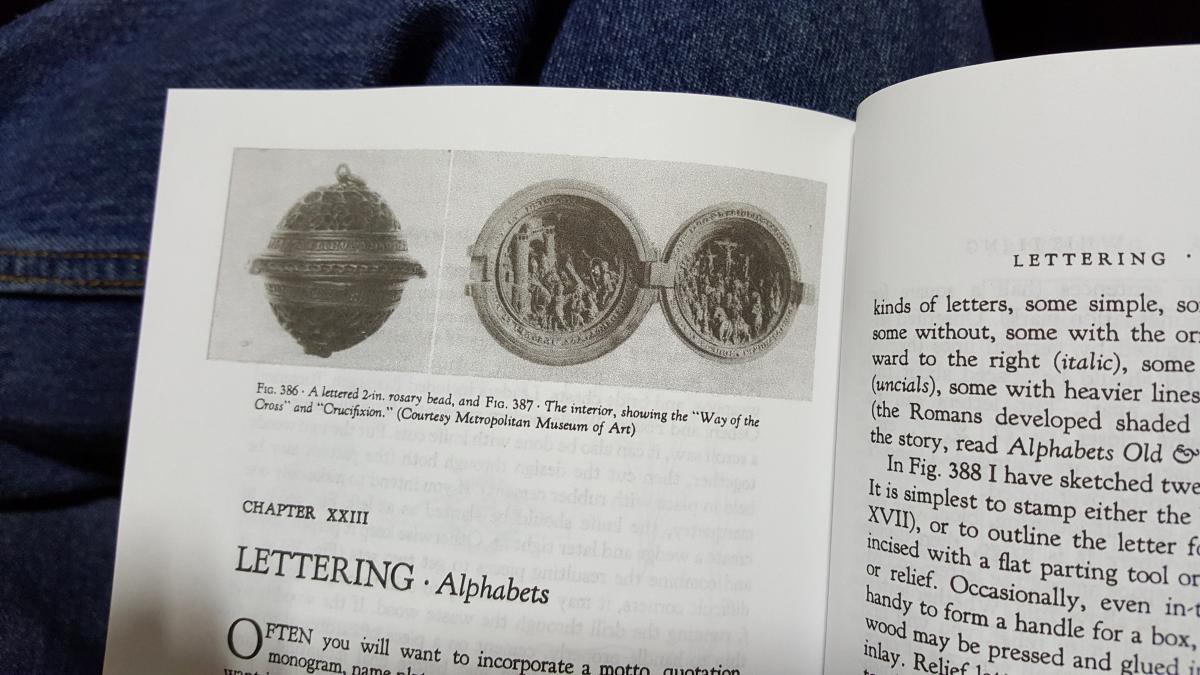|
|
05/03/2017 |

I went back to the Cloisers this past Sunday to see the Small Wonders exhibit again and also to hear a talk on the miniatures by David Esterly and Pete Dandridge. David Esterly a master carver and sculptor who has been looking at how one goes about making such small items, and Pete Dandridge is the Metropolitan Museum conservator who handled, cleaned, researched, and took apart these tiny carvings.
I attended with my friend Jeff Peachey, who is an acclaimed bookbinder with extensive knowledge of historic tools and techniques.
I learned a lot from the presentation, and also developed a few of my own theories.
The first thing I learned was that these little wonders were pretty sturdy, presumably because boxwood is a very strong and dense wood. Some of the carvings show a lot of wear. I would have thought that the fragile carvings inside would be prone to damage if the beads were shook or exposed to shock. Apparently not.
The Wikipedia entry on the beads suggests that each took 30 years to complete. This defies common sense: who could have spent their entire career on one carving? The panelists thought that almost all the beads were made over a 30 or so year period, possibly by one maker or one shop. (The works are not signed.) Why the carvings stopped being made is a mystery, with several theories proposed. Perhaps the maker retired and nobody picked up the creative baton. Another idea: the carvings fell out of fashion. At the time the Netherlands, where the carvings originate, was going through the throes of a Protestant reformation; fancy decorated prayer beads would have fallen out of use and fashion.
The exhibit includes a miniature diorama of tools (damaged) examples of the work of a Miniaturist named Ottavino Jannella C. 1654-60(see above). Are these miniature tools the actual type of tool used to carve these types of miniatures? The panelists thought possibly they were. Peachey and I thought there was no chance this was the case: the tools' handles were simply too small. When you work on miniatures, the carving tools might have been tiny but it is far easier to mount them in full sized handles.

The other thought I had was about magnification. Next to the the case of tools is a pair of cracked spectacles. In those days magnifiers existed, although given my own nearsightedness I cannot imagine anyone wearing the crude lenses of the 16th century for any length of time without getting painful eyestrain. We also know from 19th century documentation that a woodworker who wore spectacles would be considered handicapped and would not be able to keep a job. I don't have documentation saying this was also the case in the 16th century, but I can't see why it would not be. My own thought is that a trained carver who was nearsighted would love working on miniatures. The general consensus was that the carvers worked on raised benches (like jewelers). A raised bench would bring it close to focus. A nearsighted carver would have a distinct advantage over a carver with normal eyesight for this kind of detail work. Of course a magnifier would be helpful but there is a big difference between occasionally using a glass versus having to stare all day though crappy glass.
On the actual carving, most of the detail was done in layers that were then assembled. David Esterly showed a bit of boxwood where he laid out part of one layer and then started carving. What he actually did was lay out the design on a larger piece of material so he had tabs on either side of the actual work that could be used to clamp down the wood and would be removed later. He also categorically stated that carving the boxwood by holding it your hand and carving with the other wouldn't work because the boxwood is so hard you would need a rigid setup to make any progress.
When you get down to tiny details the carvings lose a lot of detail. Eyes are suggested but they don't have the detail of a larger carved eye; foliage is suggested, but not leaf by leaf. However, when you look at the piece from a normal close distance, the overall tableau suggests incredible detail, which is exactly the effect you want. So from a carving perspective, the resolution does stop, but from a viewer perspective the detail is amazing.
Pete, the conservator, has handled the miniatures and made a short film on how the balls were assembled. In general they were carved from layers, which were put together and could be taken apart (when you removed the right pegs in the right order). The outer shell would have been turned and then carved. By themselves, the shells are very beautiful and tricky carvings. Each layer they would have been sawn to rough size, as much waste as possible drilled out, and then the details carved. Spears, swords, and other small details were fitted separately at the end. I say fitted because they were not glued on, but rather fitted into a socket or hole.
 Pete did tell me that the reason that the bead in Whittling and Woodcarving was disassembled was the research has shown that the bead as originally exhibited was actually assembled later, improperly from a multiple sources. Currently there are not plans to reassemble it, and it will stay as a construction study. I understand the logic but I am bummed about that. Pete did tell me that the reason that the bead in Whittling and Woodcarving was disassembled was the research has shown that the bead as originally exhibited was actually assembled later, improperly from a multiple sources. Currently there are not plans to reassemble it, and it will stay as a construction study. I understand the logic but I am bummed about that.
A link to hi-res photos of all the items in the exhibit is here.
A link to the page with the video is here:
In other news this coming weekend (May 6) we are having a free class on using Lockwood Dyes. It will be taught by Herb and Jesse from Lockwood. Staining and dying wood is a bit of magic for many woodworkers so having it explained by the experts is useful.
In June, we're offering two all day modern construction classes. Since they're comprehensive all-day classes, they aren't free, but I think they are well worth the cost for anyone wanting to do modern construction. The first class is about how to design and build a Kitchen Cabinet (you go home with a small cabinet). The second class is building a Zig-Zag chair (you go home with a chair). In both cases you will be using Festool portable power tools to precisely cut and join your work. Being portable, Festool is the perfect system for someone who doesn't have the space for large stationary saws.
Finally, if you do carve miniatures or any small work, take a look at our OptiVisors or OptiSights. Don't be like Medieval or Renaissance craftsman, who were peering through Coke bottle bottoms (an analogy that doesn't work well in the days of plastic soda containers, but you know what I mean) when you could easily slip these viewers on. They've made a real difference to me personally. I had thought I was unable to do close work anymore, but with the Optivisor I find I am back in the game.
|
Join the conversation |
|
 Joel's Blog
Joel's Blog Built-It Blog
Built-It Blog Video Roundup
Video Roundup Classes & Events
Classes & Events Work Magazine
Work Magazine




 Pete did tell me that the reason that the bead in
Pete did tell me that the reason that the bead in